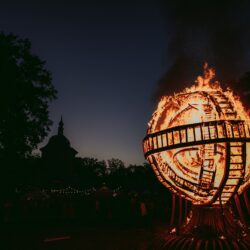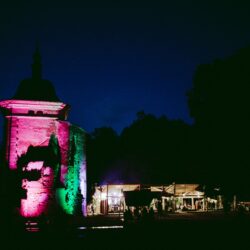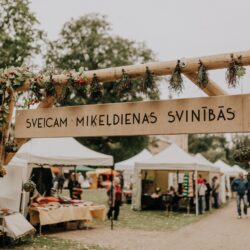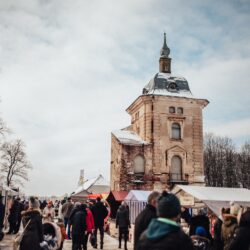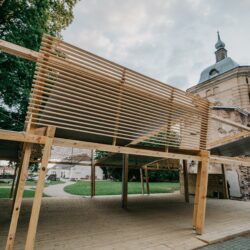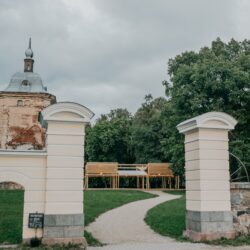Valmiermuiža Manor Park
- We speak: Russian, English, Latvian
- Plenty of parking space.
- Wheelchair friendly
- Restroom available
- Picnic/resting place(s) available
- Drinks and snacks available. Contact for more info.
- Rain and sun shelter available
- Children's playground available
- Pets are welcome
Entering Valmiermuiža Manor Park through the gates in the old stone fence visitors can sense the spirit and atmosphere of a bygone age – the historical values of the place have been meticulously preserved in the park’s buildings and surrounding landscape.
Valmiermuiža Manor has been located here since approximately 1620. For centuries, several major traffic routes connecting Western Europe with St. Petersburg, or Riga with Pärnu and Tartu have led past it, which is why travelling noblemen frequently stayed here.
Valmiermuiža Manor Park is only one small part of the former castle’s territory. Valmiermuiža Castle developed most rapidly in the late 18th century when it was managed by Peter August Friedrich (1697–1775), Prince of Schleswig-Holstein-Sonderburg-Beck. He built a baroque villa, or a maison de plaisance, in Valmiermuiža around 1764 and created a vast park. The villa, which was the only one of its kind in the Baltic States, was used by the prince as both a hunting residence and a summer palace to welcome guests, among them several members of royal households including the Russian Empress Catherine II.
During Peter August Friedrich’s rule, Valmiermuiža Castle Park was designed as a carefully maintained neo-baroque garden and landscaped park. A century later, in 1876, landscape engineer Friedrich Lode created a design of Valmiermuiža Manor Park complete with arbours, bridges and sculptures of lions, but it was only partially realised. Like the castle and surrounding buildings, the park was destroyed in both world wars. The modest castle tower, the park gates, fragments of the stone fence and the outbuildings are the only parts that have survived to this day.
It was only around 2006 when a brewery started operating in the manor that the area gradually started to be revived. In 2016 a rose garden in the colours of the Latvian flag was planted dedicated to General Magdalene Elisabeth von Hallart (1683–1750), a former tenant of the manor. The site of the main building of the former manor is now marked out by a large paved area that has become a popular venue for events. In 2019 a variety of shrubs were planted in the park – cornelian cherries, forsythias, physocarps, elderberry trees, white dogwoods, viburnums and lilacs of various varieties, mock oranges and beach roses. These delight visitors from spring to autumn.
-
Style
Visitor information
- Tickets
Free entrance. - Season
Open all year round. - Opening hours
Open around the clock.
Find us and get in touch
- +371 26332213
- tic@valmierasnovads.lv
- View homepage
- Dzirnavu iela 2, Valmiermuiža, Valmieras novads
